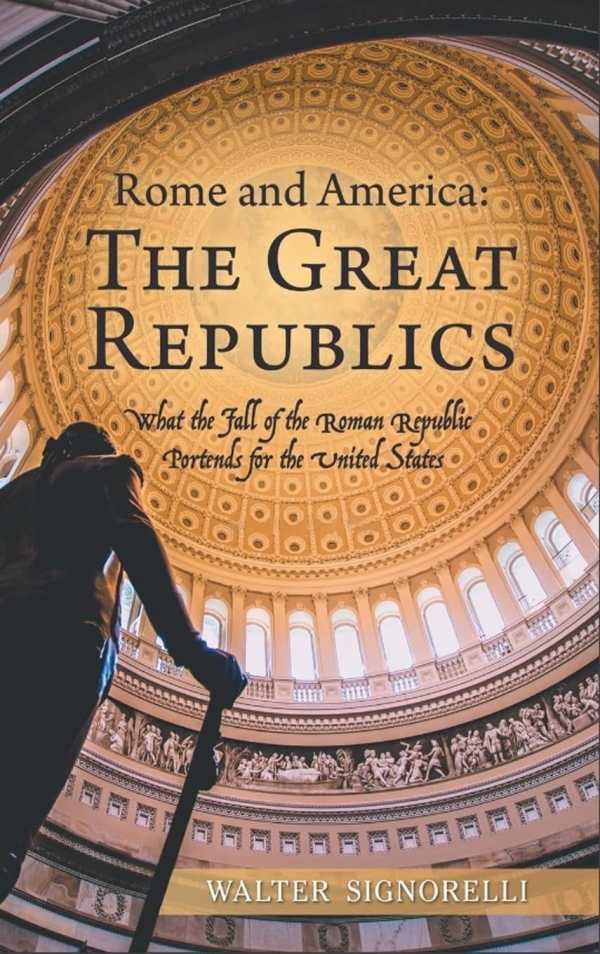Rome and America
The Great Republics: What the Fall of the Roman Republic Portends for the United States
Active, engaging, and encyclopedic, the political science text Rome and America compares and contrasts two great nations.
A grand historical analysis of the similarities between ancient Rome’s republican period and the United States of America, Walter Signorelli’s Rome and America draws out the greatness and potential for disasters shared by these two democratic republics.
Before Julius Caesar declared himself dictator for life and ushered in Rome’s era of emperor rule, the ancient civilization was structured around democratic government, constitutional law, and individual liberties, all of which inspired the founders of the US, the book says. Highlighting the enormous debt the US government owes to Rome, Rome and America details the structural and historical similarities between the societies. Leaping from the revolutionary beginnings of the thirteen American colonies that declared independence from King George to the Roman overthrow of an ancient Etruscan king in favor of self-government, it includes lengthy summaries of Roman and American history to show that the two republics are not just similar but followed parallel historical trajectories. Based on this, the book argues that the US is in peril of succumbing to the forces of tyranny and autocracy that overwhelmed Rome, forces that can only be avoided through the renewed embrace of constitutional and democratic principles.
The enormous scope of Rome and America, coupled with its meticulous documenting of historical facts, such as the eerie resonance between rising corruption and costs in the political campaigns of the late Roman republic and contemporary money-inundated elections, makes for an encyclopedic text. There are blow-by-blow descriptions of how political trials were mounted against figures like Lucius Murena, who used bribery during his 63 BCE campaign, alongside fluid accounts of how laws evolved and changed in ancient Rome. The level of erudition and ability to zoom in and out on topics—from the treatment of slaves in ancient Rome to the structural instability that a growing slave population created—gives the text an active, engaging narrative flow.
There are also many playful comparisons. Rome and America pairs storied American figures like John Adams, Franklin Roosevelt, and John F. Kennedy with their ancient Roman counterparts, highlighting personalities and the role of individual actors in history to explain the ebb and flow of power between different branches of government. However, when the book delves into contemporary American politics and takes positions on events such as the impeachments and indictments of President Donald Trump, it dabbles in the same partisan leanings that are condemned elsewhere as dangerous to democratic institutions.
While the level of information contained in the book is impressive, the chapters often separate in-depth discussions of Roman history and American history. This allows for a more granular exploration of a given historical period, as in the long summary of Rome’s war with Carthage, but also creates jarring transitions and obfuscates connections between the two histories. Connections are implied rather than stated and some feel forced, such as the insistence that Emperor Augustus is an amalgam of Theodore Roosevelt, Woodrow Wilson, and Franklin Roosevelt in the American context.
A wide-ranging comparison between preimperial Rome and the United States, Rome and America argues that contemporary Americans are in danger of making the same mistakes as the ancient Romans did.
Reviewed by
Willem Marx
Disclosure: This article is not an endorsement, but a review. The publisher of this book provided free copies of the book and paid a small fee to have their book reviewed by a professional reviewer. Foreword Reviews and Clarion Reviews make no guarantee that the publisher will receive a positive review. Foreword Magazine, Inc. is disclosing this in accordance with the Federal Trade Commission’s 16 CFR, Part 255.

